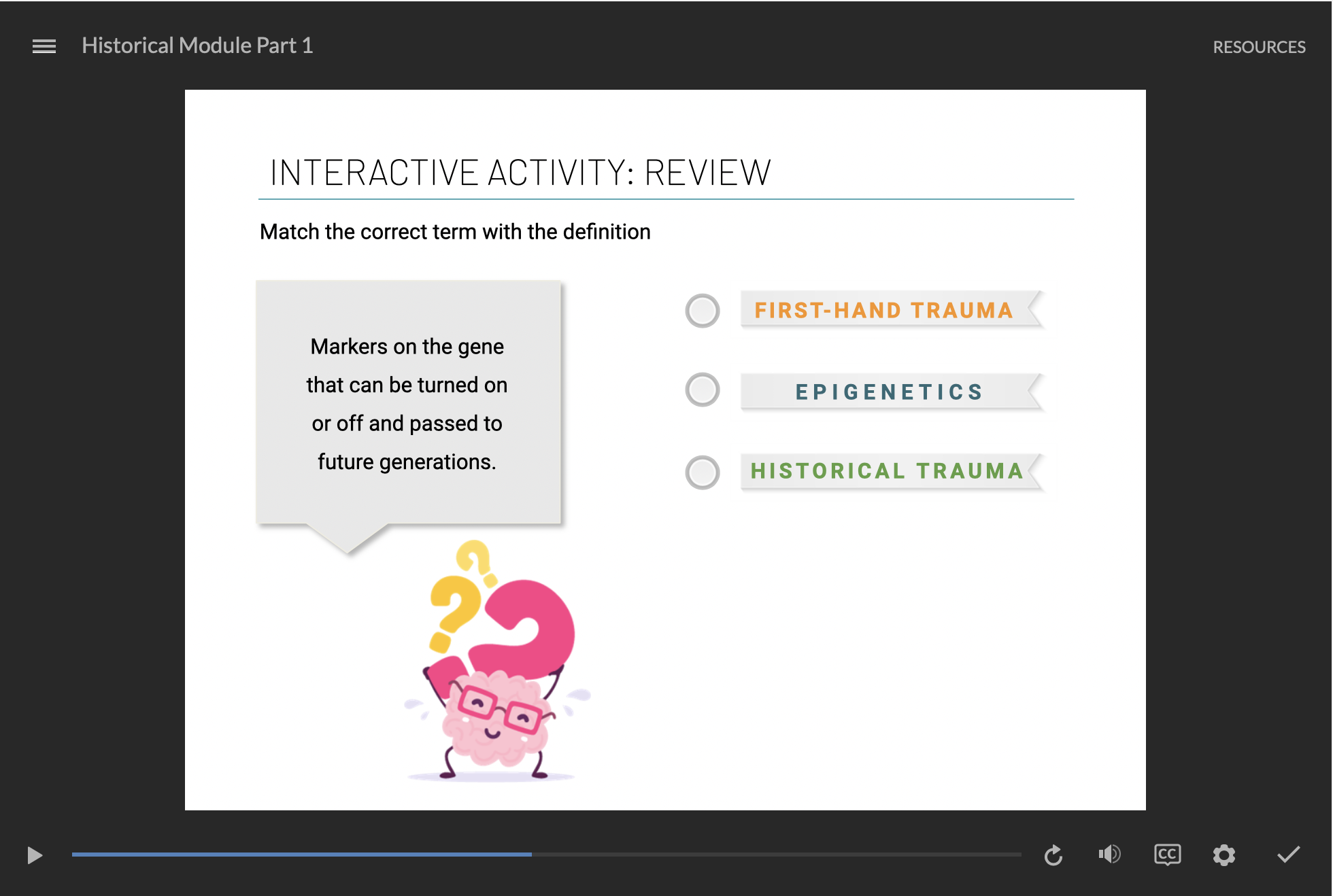The California Trauma-informed Care Academy (CalTICA) was the first time that I attempted instructional design. It was a project funded by the California Governor’s Office of Emergency Services to provide training for multidisciplinary professionals on trauma-informed care. With the help of subject matter experts from different fields, I identified the learning objectives and supporting content necessary to acquire trauma-informed skills for different workplace settings. The course provides 3 introductory modules. The Overview Module covers how trauma impacts the brain, body, and behavior. The Historical Module covers how trauma can be passed down through generations by a process called epigenetics. And the Impact Module uses storytelling to illustrate how trauma personally impacts survivors. The other 8 modules are tailored to different professions.
A lot of visual design, video/audio editing, and writing went into these modules, which I developed mainly on Storytelling 360 and also with Adobe Creative Suite (Premiere Pro and Adobe Illustrator). This project took place during the COVID-19 pandemic and the lockdown likely helped it gain traction because it offered the flexibility of on-demand asynchronous learning to learners. We had over 500 people sign up in the first 2 months of its launch by word-of-mouth alone.
This was a big project, and I didn’t fully understand the amount of work that it required when I went into it. I had no prior experience with instructional design or e-Learning, but I learned how to use Storyline 360 and apply the principles of e-Learning as the project progressed. I found the process rewarding and it inspired me to keep cultivating my skills in instructional design. As the project neared the end of its lifecycle, and as I transitioned into a new job, I began to take classes for the e-Learning Instructional Design certificate program of UC Irvine’s Division of Continuing Education, which I completed earlier this year. When I look back at the work I did with CalTICA, I can definitely compare how my newer work demonstrates growth both visually and structurally. However, I am proud of this project because I think it offers interesting, applicable, and useful information that is engaging to learners.
Note: to see the full work, it is necessary to sign up to the learning management system where the project is hosted. Screen recordings and screenshot examples of the course are provided below.
Interactive Activities
This activity is meant to cover the different parts of the brain that are impacted by childhood trauma. Users can hover their mouse over the brain and learn where each brain structure is located. When they click on the labels they can read about how each structure functions and responds to trauma.
This activity is meant to help learners remember different terms covered throughout the course.




